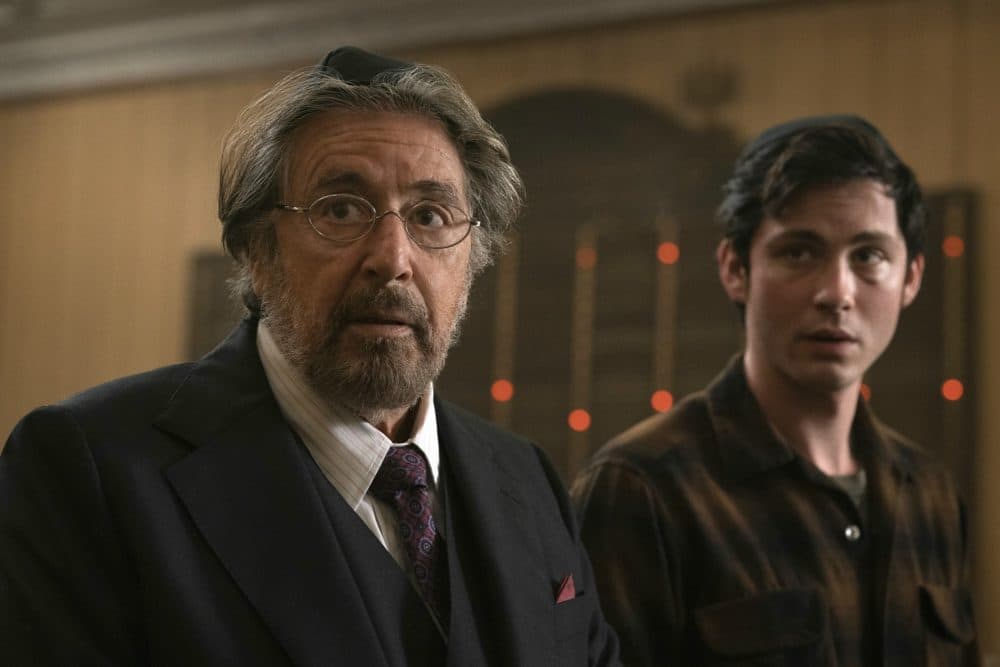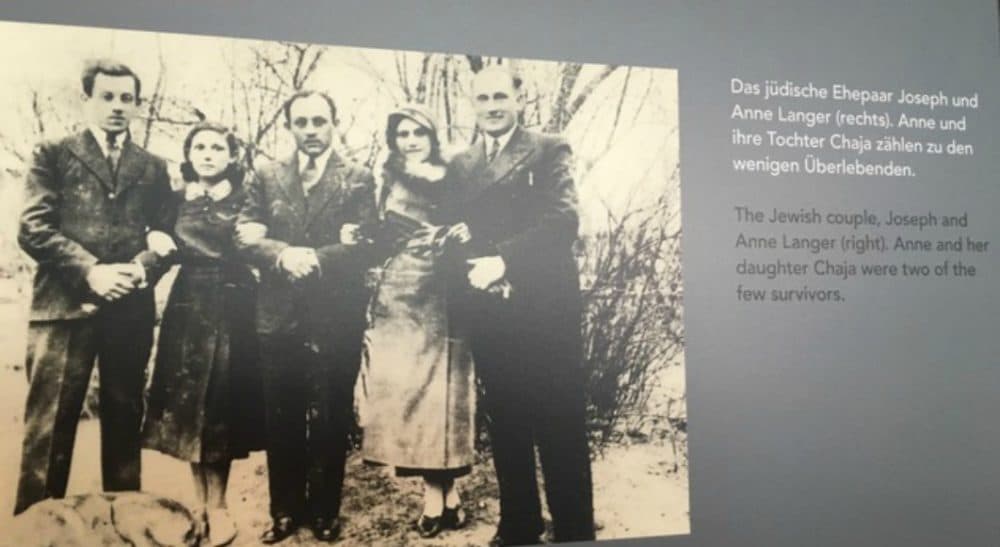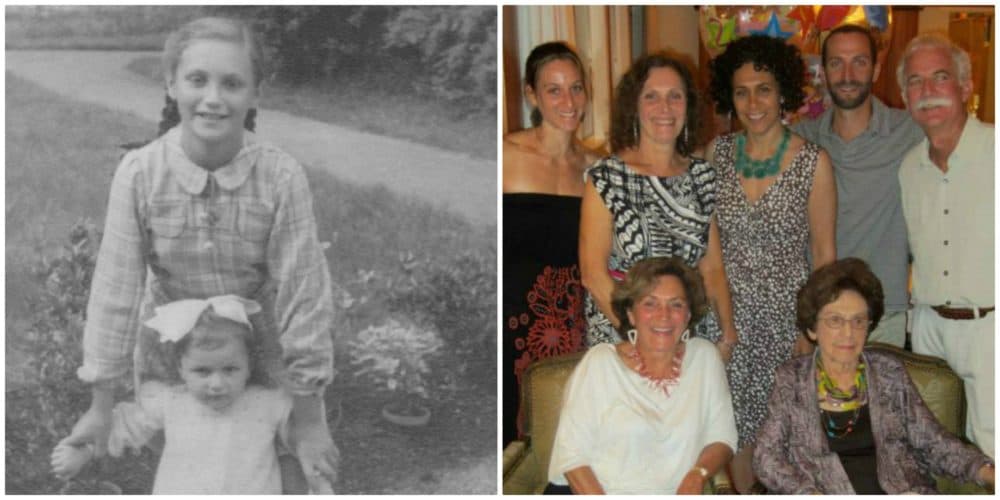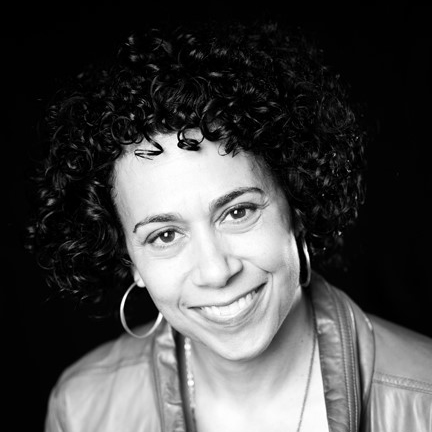Advertisement
Commentary
Amazon's 'Hunters' Exaggerates The Atrocities Of The Holocaust. It Shouldn't

Several nights ago I sat down to watch the new Amazon drama series “Hunters” about a fictional group of underground vigilantes in the 1970s who hunt down and kill Nazis hiding in the U.S. As the daughter of two Holocaust survivors, I thought I might find this escape into vigilante justice satisfying. Instead, I was stunned by the show’s reliance on scenes of completely fictional extra-sadistic, extra-violent Nazi behavior, as if the actual behavior of real Nazis and their collaborators wasn’t enough to warrant a desire for justice.
In one scene (spoilers ahead) a Nazi officer forces a Jewish prisoner, a chess master, to play chess against him using Jewish prisoners as chess pieces on a life-sized board. Whenever a piece is “taken,” the winning prisoner must stab the losing prisoner to death. In another fictional scene, a music-loving Nazi rounds up Jewish camp prisoners to sing over the camp-wide PA system each day, shooting the singers one-by-one whenever someone misses a word or sings off-key, until only one is left.
“Hunters” creator David Weil, the grandson of a Holocaust survivor, defended the show as "representationally truthful" of the "sadism and violence that the Nazis perpetrated against the Jews and other victims." About why he included the chess scene, Weil said:
To most powerfully counteract the revisionist narrative that whitewashes Nazi perpetration, by showcasing the most extreme – and representationally truthful – sadism and violence that the Nazis perpetrated against the Jews and other victims.
Defending the appropriateness of fictionalizing the Holocaust, he said he didn’t want to show “specific, real acts of trauma.”
... the vast reach and breadth of the Holocaust was only possible because ordinary people collaborated, complied, or looked away.
There’s nothing wrong with writing or filming fictionalized stories about the Holocaust, but these “extra-evil” scenarios imply that the real Holocaust was not bad enough, and that inhumanity only exists in the most extreme actions, not in the ordinary ones of ordinary people.
In September 2016, I traveled to Berlin with my mother, who was invited as an honored guest to the opening of a new exhibit called “Mass Shootings: The Holocaust from the Baltic to the Black Sea 1941-1944,” at the Topography of Terror Museum. The exhibit interpreted relatively new scholarship on how 2 million of the 6 million Jews murdered in the Holocaust were shot or asphyxiated in gas vans by roving Nazi killing squads. Not only by enthusiastic, elite Nazis, but by the young, drafted foot soldiers. Local police forces and even neighbors often collaborated with the Nazis who carried out these shootings throughout Eastern Europe, destroying over 1,000 Jewish communities. According to the curators (as described in the exhibit catalog):
Advertisement
Germans incorporated local nationalists into their occupation apparatus … Many took part voluntarily in the killing as shooters. Locals also helped the occupiers hunt down Jews who had fled into the woods to escape … At the killing sites, a kind of ‘shooting tourism’ set in: thousands of members of the occupying forces and locals who were not directly involved came to watch the mass murder.

What is more horrifying: one fictional Nazi forcing Jewish prisoners to stab each other in a chess match or thousands of ordinary people coming to watch their neighbors — children, women, and men — being shot into a pit? It’s a scenario grossly familiar in our own country from the mid-19th to mid-20th centuries, when Americans attended the lynchings of African Americans as a form of entertainment.
My mother was invited to this exhibit in Berlin because the exhibit featured her hometown of Mizocz, Poland (now Ukraine), where Jews had lived for over 300 years. There is photo documentation of the shootings of the Jews in her town.
My grandmother and 4-year-old mother escaped the shootings because my grandfather paid someone to hide them. But before my grandfather could join them, one of their neighbors betrayed him to the Nazis and he was killed.

Soon after the “Hunters” episodes aired, the Auschwitz Memorial tweeted its objections, saying that the fake human chess game “is not only dangerous foolishness & caricature. It also welcomes future deniers.”
Coincidentally, on February 23, the same day the Auschwitz Museum registered its dissent, an annual carnival in Belgium was featuring carnival floats with vile anti-Semitic caricatures of Jews with big noses and bags of money, as thousands of onlookers enjoyed the spectacle. The carnival had also sold hundreds of “rabbi kits” of large noses, sidelocks and black hats so Belgian carnival participants could mockingly dress as Chasidic Jews. No matter that during the Holocaust 24,000 Jews in Belgium were murdered.
My objection to the scenes in “Hunters” is that they diminish the complicity required for genocide. While individual Nazis were often extremely sadistic — murdering family members in front of each other, conducting inhumane medical experiments — the vast reach and breadth of the Holocaust was only possible because ordinary people collaborated, complied or looked away.
This is the lesson we need to remember today: not that sadistic, murderous bigots exist, but they only thrive when the rest of us comply.
